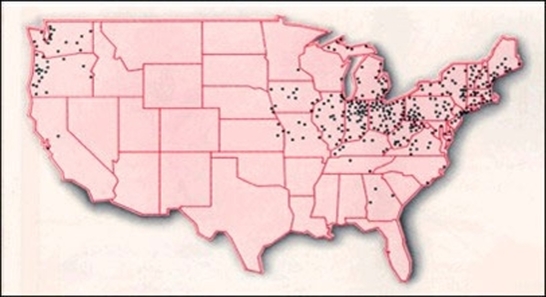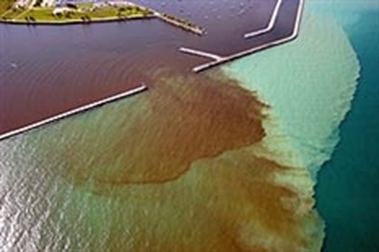Underground sewer systems channel wastewater from its various sources to a wastewater treatment facility, where it is treated and re-released into the environment. These sewer systems may segregate sanitary and stormwater, or else it may be combined in one sewer. Storm events, melting snow, or other times of high sewer demand may overwhelm the system; meaning there is more wastewater and runoff than the sewers and treatment plants can handle. During these times, excess stormwater and raw sewage are diverted directly into nearby streams or coastal waterways resulting in combined sewer overflows (CSOs).
Combined sewer overflows are largely the result of outdated or inadequate sewer systems. They are remnants of the country’s early infrastructure and are typically found in older communities. Outdated sewerage system infrastructure often leaks and lacks capacity, especially in large urban areas.
Approximately 770 cities in the U.S. that have combined sewer systems. While a problem nationwide, combined sewer overflows are concentrated heavily in the 8 Great Lakes states when compared to the rest of the country.
A rough illustration of the prevalence of combined sewer systems in the U.S.
In a 2004 survey, the United States Environmental Protection Agency (EPA) found 70 percent of the nation’s combined sewer systems in need of upgrade were in the Great Lakes states. The EPA estimates the Great Lakes region faces a $23 billion backlog in needed sewer improvements, just to keep the existing combined sewer and stormwater systems intact. More than 24 billion gallons of combined untreated sewage and stormwater is dumped into the Great Lakes each year.
In 2010 and 2011, nearly 19 billion gallons of untreated sewage and runoff came from Detroit, Cleveland, Toledo, Buffalo, Hammond, Chicago, and Milwaukee. Between 2007 and 2010, Chicago alone dumped nearly 19 billion gallons of untreated sewage mixed with stormwater into Lake Michigan.
The discharges include high levels of bacteria, parasites, viruses, toxic metals including copper and cadmium, nutrient pollutants including phosphorus, and suspended solids. Bacteria and viruses in untreated sewage pose a significant health risk, and are a major cause of beach closings and swimming advisories across the Great Lakes region.
|
To address CSOs, communities need to upgrade aging sewage infrastructure and pipes, separate combined sewer systems that allow stormwater to mix with household wastewater, and implement green infrastructure. In many cities, separating municipal and stormwater sewer pipes is virtually impossible because of the cost. Green infrastructure is the use of natural systems, such as wetlands, street trees, other types of vegetation and green space such as rooftop greenery and rain gardens, and pervious pavement to soak up stormwater and filter out the pollutants it contains. These methods reduce the amount of water that flows into the traditional, “hard infrastructure” system of pipes, pumps, storage tunnels, and treatment plants that is costly to build and maintain. |
Additional Resources



